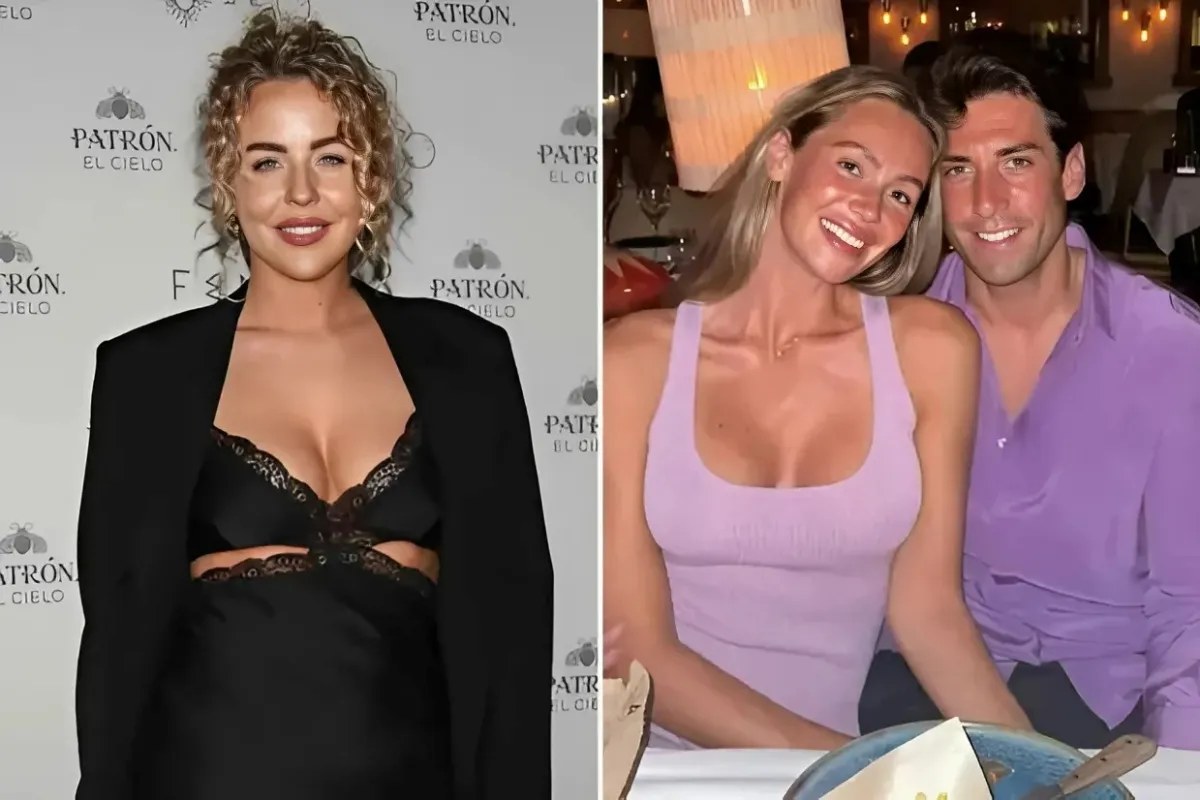EXCLUSIVE: Around one hour’s drive from Stockholm in the Swedish countryside, the small town of Strängnäs has recently found its place on the cultural map as the home of numerous versions of Netflix’s Love is Blind.
Although he’s not in Sweden looking for love, Netflix EMEA chief Larry Tanz finds himself in the famous pods chatting with Deadline about this little known hub from which the streamer executes one of its biggest global franchises, and the new versions just keep on coming.
Tanz is in Sweden for the first time visiting the Polish Love is Blind, the sixth version to have filmed at the hub, with The Netherlands due next and Sweden, Germany, France, Italy and the UK having come before them. The colossal number of versions currently filming in Strängnäs mean that the town is occupied with a crew of hundreds of people for around 40 weeks of the year. When he zooms out and considers how far the franchise has come, Tanz, who oversees thousands of hours of Netflix programming per year in Europe, the Middle East and Africa, says this was never part of the plan.
“We didn’t set out to do this,” he tells Deadline. “We’re not in the formats business. We didn’t approach it saying, ‘Hey, let’s find a format and then put it in a bunch of countries’.”
Instead, Tanz stresses that unscripted juggernauts like Love is Blind, Rhythm and Flow and Too Hot To Handle have arrived slowly and organically via local commissioning teams, who he deems “the powers that be.” These teams have to make their case to Tanz and his Netflix EMEA HQ team in Amsterdam for why a local version of Love is Blind would work in that particular nation. While this rollout has sped up of late, it is not a given that every pitch for a new version will automatically be given the greenlight.
“I am looking at Love is Blind and thinking about what is good sequencing and what is a good arrangement of production,” adds Tanz. “How can we launch in different countries in a way that is best for each of those countries? That also makes sense in the bigger picture because we put all of these on Netflix all over the world. They’re not happening in a vacuum in their own country.”
If you’re reading this article, you probably know the Love is Blind drill. The series follows men and women hoping to find love as they first meet in walled pods where they can’t see each other and decide after several dates whether the power of their connection is strong enough to take the plunge and get married. The show then moves to them seeing each other for the first time, meeting families and other contestants, then deciding whether to get married in final episodes that range from the dramatic to the exceedingly dramatic. In the U.S., the show has aired for eight seasons and more than 100 episodes, while there are now 10 local versions and counting, making Love is Blind Netflix’s biggest non-fiction entertainment franchise.
A gargantuan effort is required to produce each version from Strängnäs, Tanz says. The set spans 6,500 meters with 20 pods and nearly 60 cameras capturing contestants’ every move. A rigorous editing process is then required to locate the fun, heartwarming stories from the dull ones that are tossed aside on the cutting room floor. And that’s before the show even relocates to other locations, bringing extreme logistical challenges in and of itself.
“It really is kind of like three or four shows in one,” says Tanz. “You have the dating and pods, then we have to get everybody out without having them meet each other or talk to each other and then there’s living together and then there’s wedding planning. We have a big footprint here [in Strängnäs] and an impressive set up but this really is just part one of four. You have to think about things like the logistics of filming an outdoor wedding in Sweden in May, or finding a tropical location near a northern European country.”
He pays tribute to the editors, who take a light touch approach but nonetheless have to trawl through an unwieldy amount of footage. “The social experiment is produced but everything that happens inside is real,” he adds. “Like anything in the unscripted space we’re not deciding who’s going to say what or who’s going to fall in love or out of love with whom. There’s a real time element, which is very challenging.”
Each local version is made in consultation with the Netflix U.S. team and while there is plenty for local producers to learn from, the American Love is Blind has found itself in hot water of late after a string of lawsuits were brought against Netflix and the show’s producers over complaints ranging from mistreatment, emotional distress and labor law violations. The whole debacle has kickstarted a debate across the Atlantic over duty of care in reality TV. While Tanz is not involved with the U.S. version and can’t comment on the lawsuits, he says “one of the benefits of the hub model is to have consistency and apply learnings from one to the next.” He uses examples ranging from duty of care practices to the UK team bringing in a fire drill procedure that has since been used in other versions.
Espresso, fika and alpine motifs

Multiple Love is Blind seasons may be produced from the same place via this ‘hubbing’ strategy, which has become more commonplace in recent years as unscripted shows go global (Both The Traitors U.S. and UK are produced from a Scottish castle, for example), but Tanz stresses that the set is torn down and built back up again to adapt to different cultures every time a new version arrives. Local Swedish crews work with producers and commissioners from each particular nation in order to tailor the set’s culture, vibe and look.
“The Germans had a sort of alpine motif and then for the last Swedish season there’s this beautiful view of Stockholm in the background,” says Tanz.
The Swedes were also responsible for introducing fika AKA Swedish ‘coffee and cake’ culture to filming, while Tanz jokes that the Italian crew refused to roll cameras without their espresso machines and the French “evolved the whole catering approach with a starter and a dessert.”
On a more serious note, each version has to account for the social mores unique to that particular culture. This is evidenced by Love is Blind: Habibi, the Arabic version, which is filmed in Lebanon rather than Sweden but still falls within Tanz’s remit. In Habibi, for example, the couples do not share a hotel room together before they get married, while an Imam is brought in to help with the engagement and wedding process.
“An executive asked whether [Love is Blind: Habibi] would work and our Arabic executive explained that it’s actually pretty common in their culture for people to be set up and go on a path to being married without having dated or lived together,” adds Tanz. “Those aspects are what we really hone in on, making it culturally specific. It’s really fun to see these different conversations.”
Tanz provides other examples of cultural dividers between versions, such as how the Swedish couples always “stick together and pair off” once they’ve matched up while in the UK “the love triangle concept is more common.” This, in fact, provided high drama in the first UK season when contestants Sam, Nicole and Benaiah found themselves in such a triangle.
“Someone one day will do their dissertation on cultural norms, dating and marriage and by that point there will be like 30 seasons of Love is Blind and they will be able to analyze why Germans like talking about horoscopes, or why some countries like to talk about romantic things in their very first conversation,” adds Tanz.

He returns to these cultural norms and specificities frequently when talking up the desire for more local versions of Love is Blind rather than just relying on the American original to pull in punters from around the world. The eureka moment came when conversations began over the British version several years back.
Tanz explains: “A long time ago the U.S. version was the ‘Global English language version’ and then someone said, ‘This would be great in the UK’ but then someone else said, ‘We already have Love is Blind U.S., and it’s popular in the UK’. But the thing is it’s not very British. We knew there was a really British version of this, and that comes down to the casting.”
While each Love is Blind version is of course “not happening in a vacuum,” Tanz says the ratings still skew local. “The main audience is watching their own [local] version. There are big fans who watch all of them and talk about all of them but overwhelmingly the Dutch audience is connecting with the Dutch Love is Blind, the Swedish with the Swedish Love is Blind, and so on.”
So Netflix may not be “in the formats business” per se, but Tanz acknowledges that franchises like Love is Blind are not going anywhere anytime soon.
“What’s great about them is we just get better at understanding how to produce them and what audiences are going to respond to,” he adds, wrapping up before heading on a tour of the Strängnäs set.
“If we didn’t have these franchises, and we were making great, original, local ideas in every country, that could work too. But when we find these things that are so powerful that different countries and different audiences feel like it’s their story, or their show, I mean that just speaks to the strength of the idea. Love is Blind is one of those special things.”



